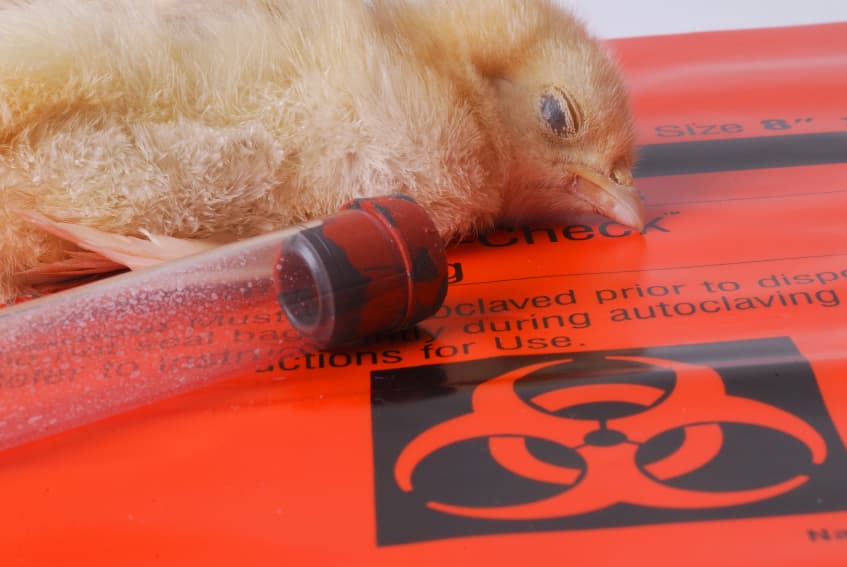Big Pharma’s sneaky play: mRNA vaccines in your chicken dinner?
03/04/2025 /
- The USDA announced a $1 billion initiative to combat bird flu, aiming to reduce egg prices and protect poultry flocks. The plan includes $100 million for vaccine research, biosecurity measures and financial aid for farmers, but critics argue it prioritizes pharmaceutical profits over sustainable solutions.
- The USDA’s reliance on mass culling — killing entire flocks to prevent disease spread—has proven ineffective, with 166 million hens culled since 2022. This practice has driven egg prices to a 45-year high and failed to stop bird flu outbreaks, with 20% of government payouts going to repeatedly infected farms.
- Experts like epidemiologist Nicolas Hulscher and farmer John Klar advocate for allowing birds to develop natural flock immunity, which they argue would be more effective and sustainable than culling or vaccination. Studies, including a March 2024 European Food Safety Authority report, support this approach.
- The USDA’s plan includes mRNA vaccines for poultry, raising fears about introducing experimental pharmaceutical technology into the food supply. Critics, including Klar and cardiologist Dr. Peter McCullough, warn of potential long-term health effects and the normalization of mRNA vaccines in agriculture.
- Some experts suggest the current bird flu strain may stem from gain-of-function research, with Dr. McCullough citing USDA studies in mallard ducks. Critics call for a global moratorium on such research and investigations into lab leaks, arguing the USDA’s plan ignores its potential role in the crisis.
The U.S. Department of Agriculture (USDA) recently unveiled a $1 billion plan to combat bird flu, promising to lower egg prices and protect poultry flocks. But beneath the surface of this seemingly noble initiative lies a troubling agenda: the potential introduction of mRNA vaccines into our food supply. Critics, including farmers and scientists, warn that this plan could perpetuate harmful practices like mass culling and pave the way for risky pharmaceutical interventions in agriculture.
The USDA’s plan: A wolf in sheep’s clothing?
USDA Secretary Brooke Rollins announced a five-pronged strategy that includes $100 million for vaccine research, biosecurity measures and financial relief for farmers. While the plan claims to address the economic fallout of bird flu, critics argue it prioritizes Big Pharma profits over sustainable, natural solutions.
What’s at stake: Health freedom and food safety
The USDA’s $1 billion plan is more than a response to bird flu—it’s a test case for pharmaceutical interventions in agriculture. By prioritizing vaccines and culling over natural immunity, the agency risks entrenching harmful practices and exposing consumers to untested technologies.
As Klar warned, “I am far more concerned about adverse health effects from experimental pharmaceuticals than I am about natural microbes.” For health freedom advocates, the stakes couldn’t be higher. If mRNA vaccines enter the food supply, it could set a dangerous precedent for the pharmaceutical industry’s influence over what people eat.de3

